Bullet journaling is a fantastic way to disconnect from the constant digital inputs that have come to influence our lives today. There are screens everywhere we look — on the bus, on the train, at our desks, and in-store windows. Everywhere we look, there’s a screen full of data. It’s easy to become overwhelmed.
A well-organized bullet journal will help.
It can hold everything you need to stay organized. The best thing about the whole bullet journal concept is that it does not require batteries. You do not have to choose between dark and light modes. It is very inexpensive to maintain aside from the expense of an essential notebook and a pen. There are no annual subscriptions or applications to purchase.
So, how exactly do you bullet journal?
How Do I Start a Bullet Journal?
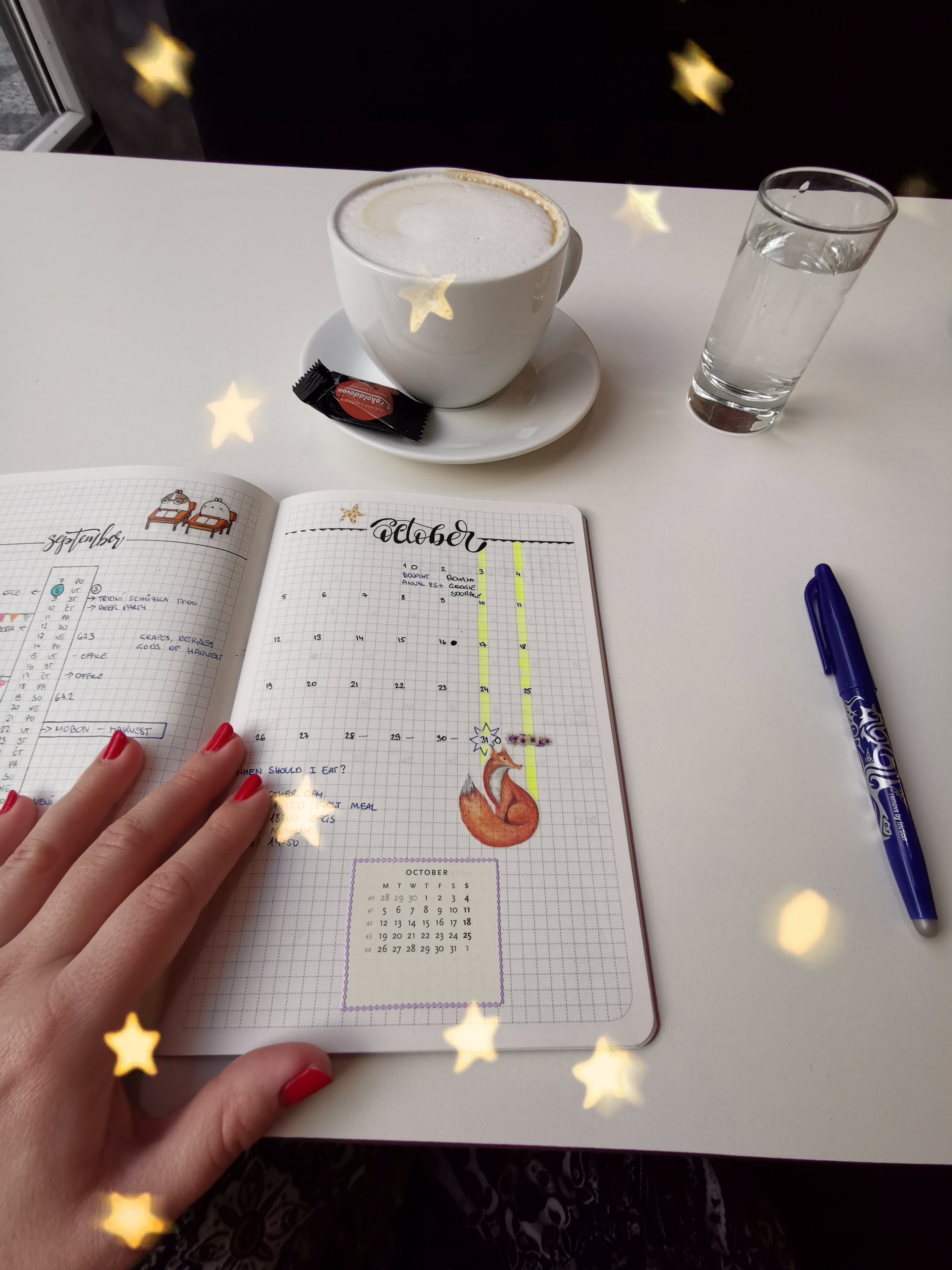
There are a lot of blog posts on the internet about how to start a bullet journal. The benefit of making your own bullet journal is that you have full control over how you set it up, arrange it, and what kind of notebook / diary you use. The web is full of ideas and suggestions about how to set one up, but the best journals are ones you make yourself; after all, we are all unique and have unique things we want to remember.
I do a lot of exercises and like to keep track of what I do, how it feels, and how hard I force myself. Others choose to maintain a regular list of two or three items they are grateful for or to keep a journal of their thoughts and feelings. It is entirely up to you what you record.
So, how do you go about making your own bullet journal?
What You’ll Need:
A strong notebook. Ideally, you can purchase a hardcover notebook. Your bullet journal will accompany you anywhere, and you will stuff it into your pocket. It will have to be tough to withstand anything you throw at it.
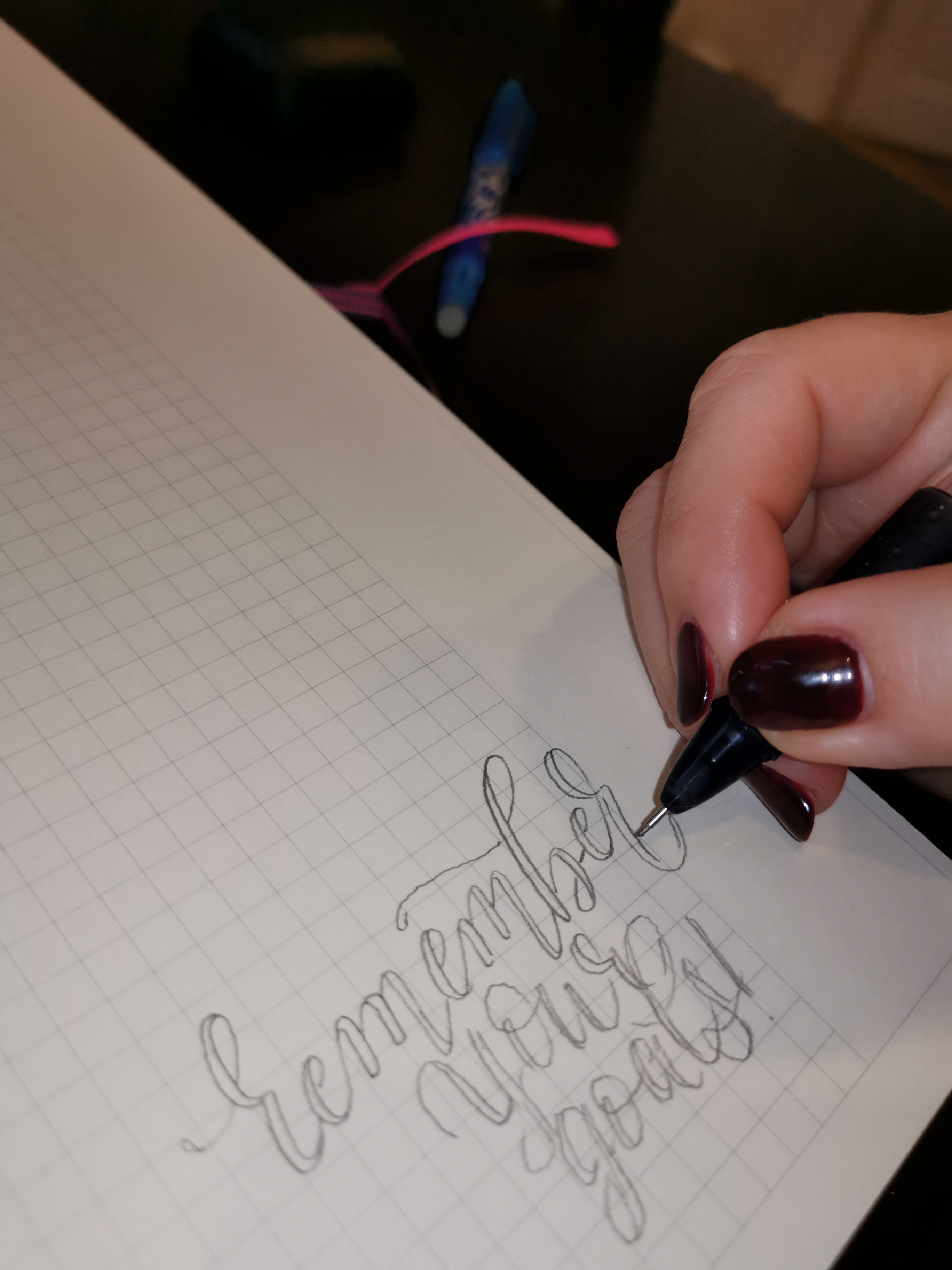
You should also pay close attention to the dimensions. Remember that your journal can accompany you everywhere you go, so it must be easily transportable. The most popular size is A5, and A5 notebooks can fit comfortably into almost any backpack.
Another thing to think about is the type of paper you’ll be using. Is it better to leave it blank, line it, or square it? I used to prefer squared paper because it helps keep the symbols on my regular to-do list in a tidy vertical line (more on symbols later.) Nowadays, I write on lined paper.
And then there’s the ink you use, the one you enjoy writing with. You want to enjoy writing in your book, which means the pen you use is important. I write with a fountain pen because there’s something beautifully old-worldly about writing with one, but you might prefer a gel pen or a simple biro.
Different colored pens may also be a consideration for the more artistic of you. The really good thing about a bullet journal is that you can use whatever colors you like for the various sections of your journal. Blue or black for your everyday to-dos, red for your daily goals.
My method is straightforward. I use a pen for checking off tasks and adding additional notes to writing that needs more details. I have a beautiful green ink for writing in. I use a pencil to check off tasks and add additional notes to writing that needs more information.
The Configuration
Now that you’ve gathered your resources let’s get started. A sturdy notebook and a pen you enjoy using for writing.
- What do you write in your bullet journal?
- How satisfied are you with your life?
Complete the Full Life Assessment
If you’re new to bullet journaling, the bullet journal website, developed by Ryder Carroll—the inventor of the bullet journal—will provide you with everything you need to get started.
The power of a bullet journal, on the other hand, is that you have total control. There are no restrictions, unlike an app on your phone or computer. You get to choose how your journal is laid out, what details you hold in it, and how you arrange your lists and notes.
The following are the fundamentals to get you started easily, but always be willing to try new things; you want to find a system that works for you, and the best way to do that is to play with various formats.

A Key
This is a content tab where you keep a list of all your main information’s page numbers.
Assume you have an idea for a new venture while sitting in a coffee shop, and you take out your notebook and jot it down. It will take time to find the idea in six weeks. To get around this, make an index at the front of your notebook and include the idea you had as well as the page number so you can find it easily when you need it.
Allow enough room for your index. At least two pages and four is normally a good number to ensure you have enough room to write anything down.
The Calendar for the Month

Write down the days of the month at the beginning of each month. You can also include the days if you like. For example, you might write down the left-hand side of the page:
- 1-M
- 2-T
- 3-W
- 4-T
- 5-F
You can add important meetings or activities to the side of your day so you can quickly see what’s going on and what’s happened.
The Monthly To-Do List is a list of tasks that must be completed each month.
The following page contains a list of the main tasks you want to complete that month. Consider this a master monthly task list.
The benefit of making this list is that it provides you with a place to map out your month and determine what goals you want to achieve. It also means you have a page you can return to on a daily basis to see how you’re doing against your monthly goals.
The Front Page
This is where you can let your imagination run wild. Simply searching “bullet journal” and going to the photos page will yield some amazingly imaginative journal entries.
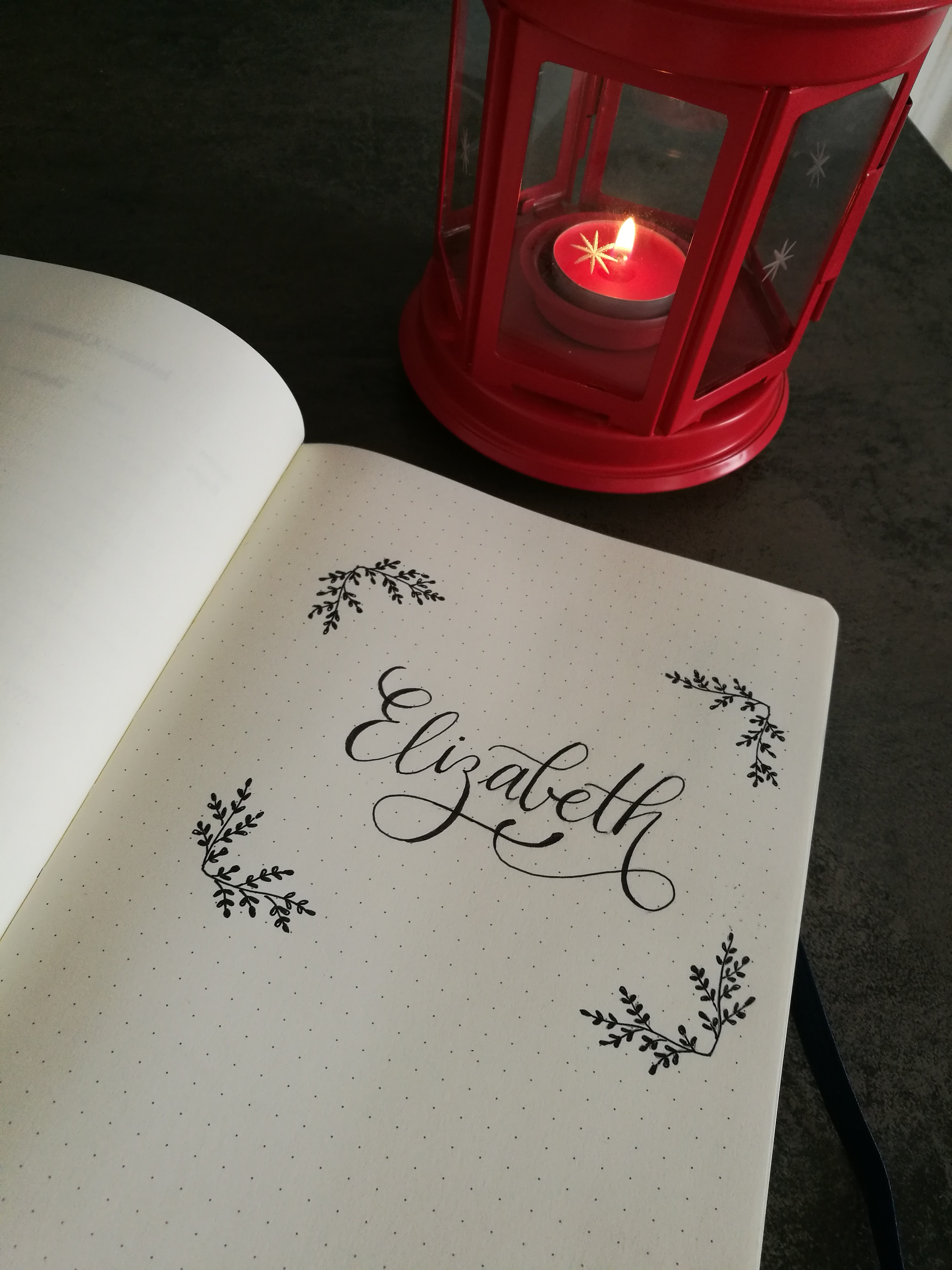
My advice would be, to begin with, the basics. Don’t go crazy. Here are the fundamentals of what you would need for your regular page:
- The items on the daily to-do list
- Your schedule for the day
- A section for your notes and ideas
You can add anything you like in addition to these necessities. I keep a section in my journal to record the workout I did for the day, how I felt, and whether or not I pushed myself. I also have my two daily goals right at the top right, so I am constantly reminded of the two tasks I will accomplish that day.
You can include items like the weather, a gratitude log, a mood tracker, and even the number of days before your next vacation.
A list of everything done that day is something I like to keep in my journal. This allows me to watch how effective I have been over time.
It’s possible to lose track of what you do on a regular basis. Most productivity programs and software concentrate on the work that needs to be finished and once completed, the work either disappears (if you use a digital system) or is never registered.
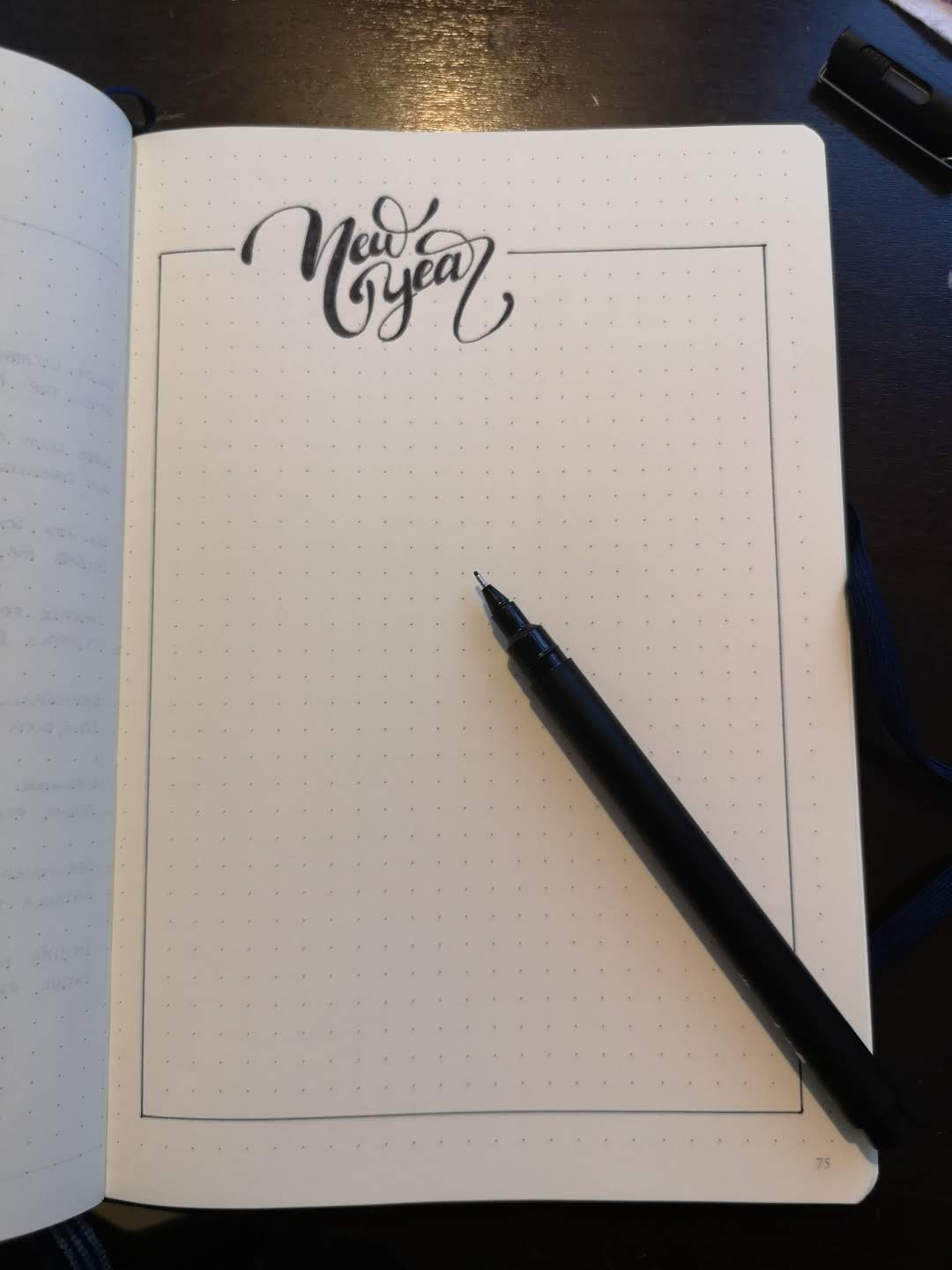
Your Objectives
Technically, this is not a bullet journal item, but I like to include my annual goals in every journal I keep. Obviously, you will run out of space in your journal and will need to purchase a new one.
I go through three journals a year, and each time I start a new journal, I write down my goals for the year. These are kept on the journal’s front cover.
I also keep a section at the back of the journal for potential goal ideas, which I pass to each new journal I start.
Writing down my goals every time I start a new journal helps me to revisit them and keeps them in the forefront of my mind, allowing me to remain focused on what I’ve decided is important to me.
Another good thing is to keep a bullet journal year at a glance page, where you can track habits, workouts or anything else on a “yearly” basis. This is really useful for having an overview of your activities and success.
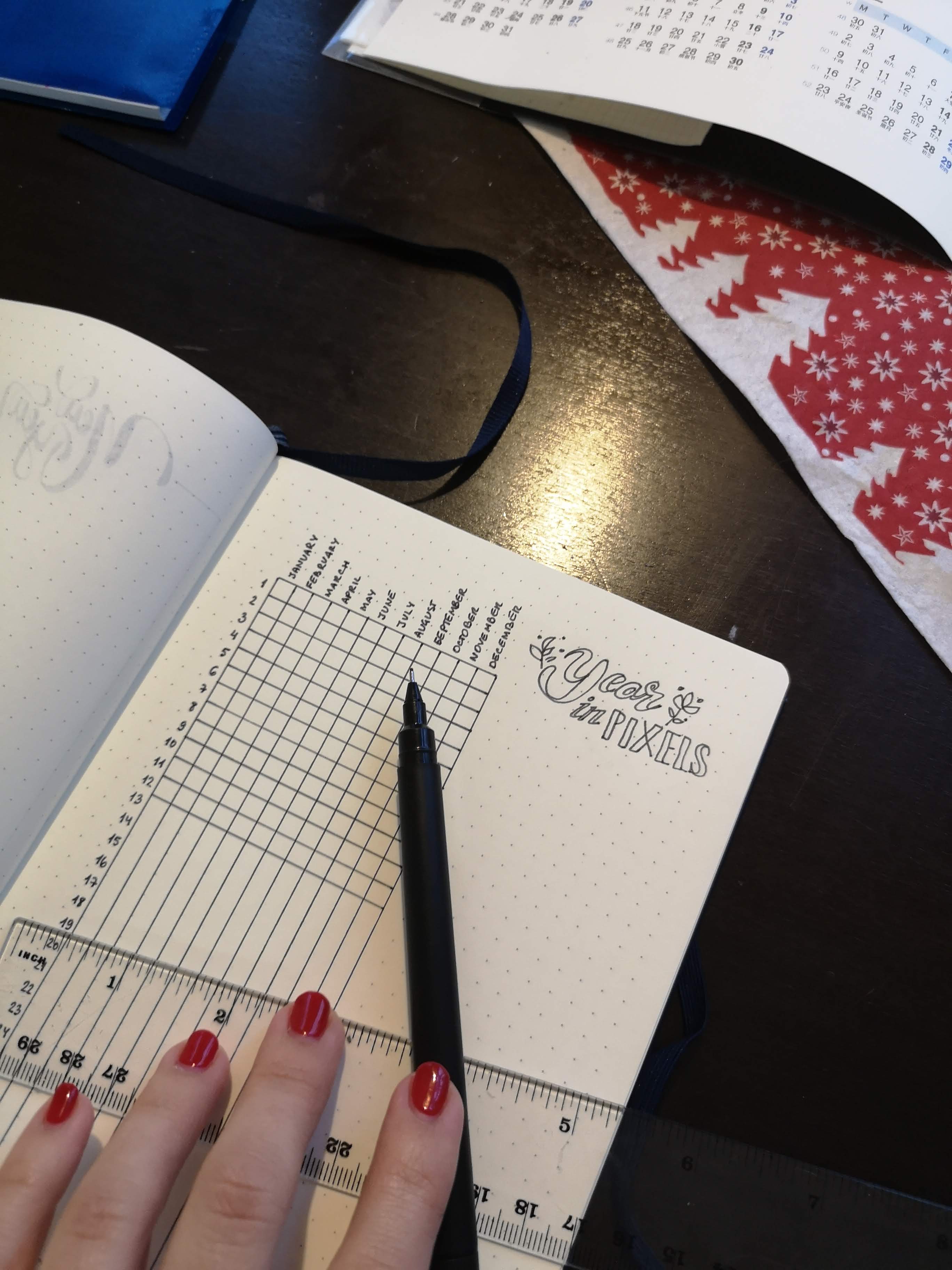
How to Use Your Journal On a Daily Basis
Now that you’ve developed your journal, the question is, how would you use it on a daily basis?
At the start of and day, you write the date at the top of the page, followed by the tasks you need to complete that day. Underneath your duties, make a list of your meetings and important activities for the day. Keep the left-hand page blank for reminders and suggestions during the day.
You use symbols to indicate what happened as you go through the day and complete your tasks:
- A simple “X” will indicate that a task has been completed (or you could just draw a line through the task)
- A “>” indicates that the mission has been deferred for another day (if you wish, you can add the date you forwarded the task)
- A “” indicates that you have agreed to postpone the mission until next month.
Tasks that you did not complete that day can be carried on to the next day.
That’s what there is to it. It is entirely up to you how you cross off your assignments, what details you gather, and what notes you write. This is the bullet journal’s strength. It’s your book, so you can design it and fill it with whatever details you want.
Following someone else’s scheme slavishly will not work for you in the long run. You should be considering what you want to document and keep. That will, of course, change with time, but you must make this journal your own.
The Master Task List (Weekly and Monthly)
Every week, go through your master task lists and see what tasks you will finish that week. Some people prefer to start each week with a weekly master task list, which can be a good idea if you have many tasks to complete.

Again, this is entirely up to you. The main thing is that you check these lists regularly and add tasks to your daily lists whenever possible.
Creating a bullet journal is easy. There are numerous online tools to help you decide what to record and how to design your journal.
A bullet journal is an excellent tool for staying structured and concentrating on what is important to you how you want to document it. It allows you to take a break from screens. Your journal will provide you with everything you need to remain organized and efficient when properly set up. It can and does assist you in being more self-aware and conscious of who you are and who you want to be.
The best thing about a bullet journal is that you can build your own process and style. You get to pick the type of notebook and pen you use, and you can create an amazing history of your life over time.
Why keeping a journal is essential for your success?

Even the busiest people I know all complain about the same thing: an inability to switch off their minds or, worse, an inability to concentrate on the tasks at hand due to a high volume of thoughts and ideas.
Begin by keeping a writing journal.
A journal is a safe place where you can express your thoughts, ideas, questions, and concerns without being interrupted or concerned about the opinions or judgments of others. It’s a place to go exploring, pontificating, and even complaining.
In a nutshell, it’s a perfect place to spill your thoughts so you can have more mental room to be productive. However, it is not the only advantage of keeping a writing journal. Here is a couple more:
It’s a fantastic way to get an “a-ha” moment.
Consider yourself in the middle of a conversation when you suddenly hear yourself say something and a light bulb goes off. Writing in a journal accomplishes the same thing. It is not unusual for new awareness to emerge when you capture your thoughts in a journal.

